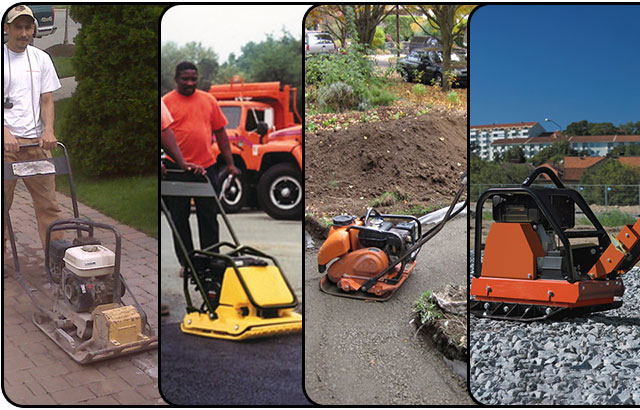The Importance of Proper Compaction: Forward and Reversible Plate Compactors
Home » The Importance of Proper Compaction: Forward and Reversible Plate Compactors

Table of Contents
Introduction
Compaction is a crucial step in construction that ensures the stability and durability of structures. Whether you’re working on a small landscaping project or a large construction site, achieving proper compaction is essential. In this article, we’ll explore the importance of proper compaction and delve into the specifics of forward and reversible plate compactors.
What is Soil Compaction?
Soil compaction is the process of increasing the density of soil by reducing air gaps, resulting in a more solid and stable foundation. This is achieved through mechanical means, often involving heavy machinery like rollers and compactors.
Importance of Proper Soil Compaction
Proper soil compaction prevents settlement and movement, which can lead to structural failures. It ensures load-bearing capacity, enhances soil strength, and reduces water seepage, making it a critical step in building roads, foundations, and other structures.
Types of Compactors
There are several types of compactors, each designed for specific applications. These include vibratory rollers, rammers, and plate compactors. Plate compactors are particularly popular for their versatility and efficiency in compacting granular soils and asphalt.
Understanding Plate Compactors
Plate compactors use a heavy steel plate that vibrates to compact the soil. The vibration helps to reduce air gaps between soil particles, resulting in a denser and more stable surface. They are ideal for compacting smaller areas and are commonly used in landscaping and paving projects.
Forward Plate Compactors
Forward plate compactors move in one direction, typically forward. They are simple to operate and are best suited for smaller projects and confined spaces. Their ease of use makes them a popular choice for DIY enthusiasts and small contractors.
Reversible Plate Compactors
Reversible plate compactors, as the name suggests, can move both forward and backward. This feature makes them more versatile and efficient, especially for larger projects where maneuverability is essential. They offer better compaction force and can handle tougher soil conditions.
Key Differences Between Forward and Reversible Plate Compactors
The main difference lies in their movement capabilities. Forward plate compactors move in a single direction, while reversible ones can move back and forth. This difference affects their efficiency, ease of use, and suitability for various projects.
When to Use Forward Plate Compactors
Forward plate compactors are ideal for small to medium-sized projects, such as walkways, patios, and small driveways. They are perfect for areas with limited space where maneuverability isn’t a major concern.
When to Use Reversible Plate Compactors
Reversible plate compactors are better suited for larger projects, such as road construction, large driveways, and industrial sites. Their ability to move in both directions allows for more efficient compaction over larger areas.
Advantages of Forward Plate Compactors
Forward plate compactors are lightweight, easy to operate, and perfect for tight spaces. They require less maintenance and are generally more affordable than their reversible counterparts.
Advantages of Reversible Plate Compactors
Reversible plate compactors offer superior compaction force, greater versatility, and increased efficiency. They can handle more challenging soil conditions and larger areas, making them a valuable tool for bigger projects.
Choosing the Right Compactor for Your Project
Consider the size of your project, soil type, and budget when choosing between forward and reversible plate compactors. For small, confined areas, a forward plate compactor is often sufficient. For larger, more demanding projects, a reversible plate compactor is a better investment.
Safety Tips for Using Plate Compactors
Always wear protective gear, including gloves, ear protection, and safety boots. Ensure the area is clear of obstacles and follow the manufacturer’s guidelines for operation. Regularly inspect your compactor for any signs of wear or damage.
Maintenance and Care for Plate Compactors
Regular maintenance is crucial for the longevity and performance of your plate compactor. This includes checking the engine oil, inspecting the plate for wear, and ensuring all bolts and connections are secure. Proper storage and timely repairs also contribute to the machine’s durability.
Environmental Considerations in Compaction
Compaction can impact the environment by altering soil structure and affecting drainage. It’s essential to balance the need for compaction with environmental concerns, ensuring sustainable practices are followed to minimize negative impacts.
Conclusion
Proper compaction is vital for the stability and longevity of any construction project. Understanding the differences between forward and reversible plate compactors helps in choosing the right tool for the job. Whether you’re a DIY enthusiast or a professional contractor, investing in the right compactor ensures your project stands the test of time.
FAQs
What is the main advantage of a reversible plate compactor over a forward plate compactor?
Reversible plate compactors offer greater versatility and efficiency, especially for larger projects, due to their ability to move in both directions.Can I use a forward plate compactor for asphalt?
Yes, forward plate compactors are suitable for compacting asphalt in small to medium-sized areas.How often should I perform maintenance on my plate compactor?
Regular maintenance should be performed according to the manufacturer’s guidelines, typically after every 100 hours of use.Are plate compactors safe to use on all soil types?
Plate compactors are most effective on granular soils. They may not perform as well on cohesive soils, which might require a different type of compactor.What safety precautions should I take when using a plate compactor?
Always wear appropriate protective gear, clear the area of obstacles, and follow the manufacturer’s operating instructions to ensure safe use.
You May Also Like